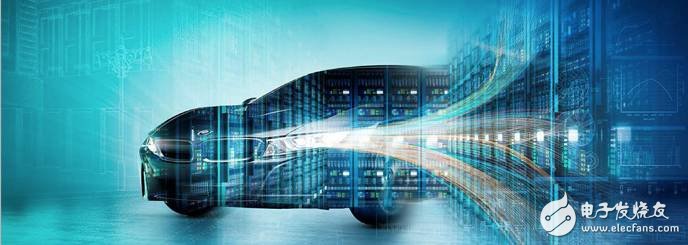
Hard working day for you
Do you want to have a driverless car?
Let you relax from the moment you get in the car?
Intel technical experts yesterday guest Beijing traffic radio "Urban Survey Group"
Just talk about those things about driverless!

Driving or driving without driving?
The driverless driving in the eyes of everyone should be called automatic driving from a professional point of view. The popular understanding is that the car can be driven automatically without the control of the person, regardless of whether there is a driver on the car, as long as it is not controlled by people. For unmanned vehicles.
From a mechanical point of view, the vehicle behaviors such as the front, back, and corner of the car are very mature, and the vehicle can be driven by itself. On top of this, a "machine" is needed to control this behavior. The judgment of the surrounding situation is identified and decided to let the car go forward. This requires a high-performance computer for information collection analysis and judgment, because the above behavior depends on the above behavior. Computers, computers rely entirely on their internal chips, so most of the control will happen in the central control area. Based on its powerful computing power, Intel chips are the best choice for chips used in autonomous vehicles.

The classification given by the American Society of Automotive Engineers is currently a common grading standard, but now there are five levels and six levels. What is the difference between the two? In fact, the difference between Level 1 to Level 5 and Level 0 to Level 5.
Vehicles without any automatic driving ability are classified as Level 0, ie “no automaticâ€. Level 1 means that there is a certain driving support device on the car, which can free your feet; Level 2 means partial automation, freeing your hands; Level 3 is “conditional automationâ€, which can liberate your eyes; Level 4 "Highly automated" frees your brain; Level 5 is "fully automated", completely liberating drivers. The biggest difference between the latter two is that Level 4 is suitable for sunny weather and good road conditions, while Level 5 has no restrictions on external conditions, and the automatic driving can be completed smoothly no matter how complicated the external situation is.
Under the current technology, everyone is looking forward to Level 3, without the driver to control the steering wheel, the car can automatically determine the vehicle distance by judging the front and rear distance and surrounding objects. This is also the current understanding of the "unmanned" goal.
Where are the chips needed for autopilot?
In the self-driving vehicle that has already been introduced, considering the configuration model configuration of the original vehicle, the overall structure of the vehicle cannot be easily changed, and the rear portion of the center console of the vehicle has just a part of space, so the current self-driving vehicle chips are placed on the vehicle. Center console part. However, with the development of the future autonomous driving technology, the automatic cockpit may change, and the chip may not necessarily be placed in the center console.

What technologies are included in autonomous driving?
The control of the brakes by the self-driving vehicle is not a problem from a technical point of view. The technology for detecting obstacles in front of vehicles is also very mature, and technologies such as laser radar, millimeter wave radar and camera can be detected. The current technical point of attack is to improve the calculation and processing speed, and how to judge whether the vehicle is moving forward or not in a very short time. For example, if there is a wall in front, the vehicle can easily judge and stop, but how can it be quickly judged if there is a smoke or fog in front?
There are three basic problems to be solved in automatic driving. The first is standardization. The most intuitive is the standardization of traffic lights. In the future, the traffic lights will be controlled by signals. When the vehicle receives the corresponding left turn or forward information, it will receive the command and Execution, not as it is now judged by the driver's naked eye. The second is the communication device between vehicles. When the vehicle is equipped with the interconnection communication device, each vehicle will know the state of the surrounding vehicle during the travel. The application of Intel 5G related car networking technology in the future will effectively promote the realization of this stage. The third and most important: massive data processing and computing, thousands of times the amount of data brought by autonomous driving puts extremely high requirements on the computing power of single-chip single-power consumption, and this is Intel’s strength and future efforts. The direction.
In the near future, driverless technology will carry you to a more enjoyable life! For more details, click on the audio below to listen to the full show!
KNLE1-63 Residual Current Circuit Breaker With Over Load Protection
KNLE1-63 TWO FUNCTION : MCB AND RCCB FUNCTIONS
leakage breaker is suitable for the leakage protection of the line of AC 50/60Hz, rated voltage single phase 240V, rated current up to 63A. When there is human electricity shock or if the leakage current of the line exceeds the prescribed value, it will automatically cut off the power within 0.1s to protect human safety and prevent the accident due to the current leakage.
leakage breaker can protect against overload and short-circuit. It can be used to protect the line from being overloaded and short-circuited as wellas infrequent changeover of the line in normal situation. It complies with standard of IEC/EN61009-1 and GB16917.1.
KNLE1-63 Residual Current Circuit Breaker,Residual Current Circuit Breaker with Over Load Protection 1p,Residual Current Circuit Breaker with Over Load Protection 2p
Wenzhou Korlen Electric Appliances Co., Ltd. , https://www.korlenelectric.com